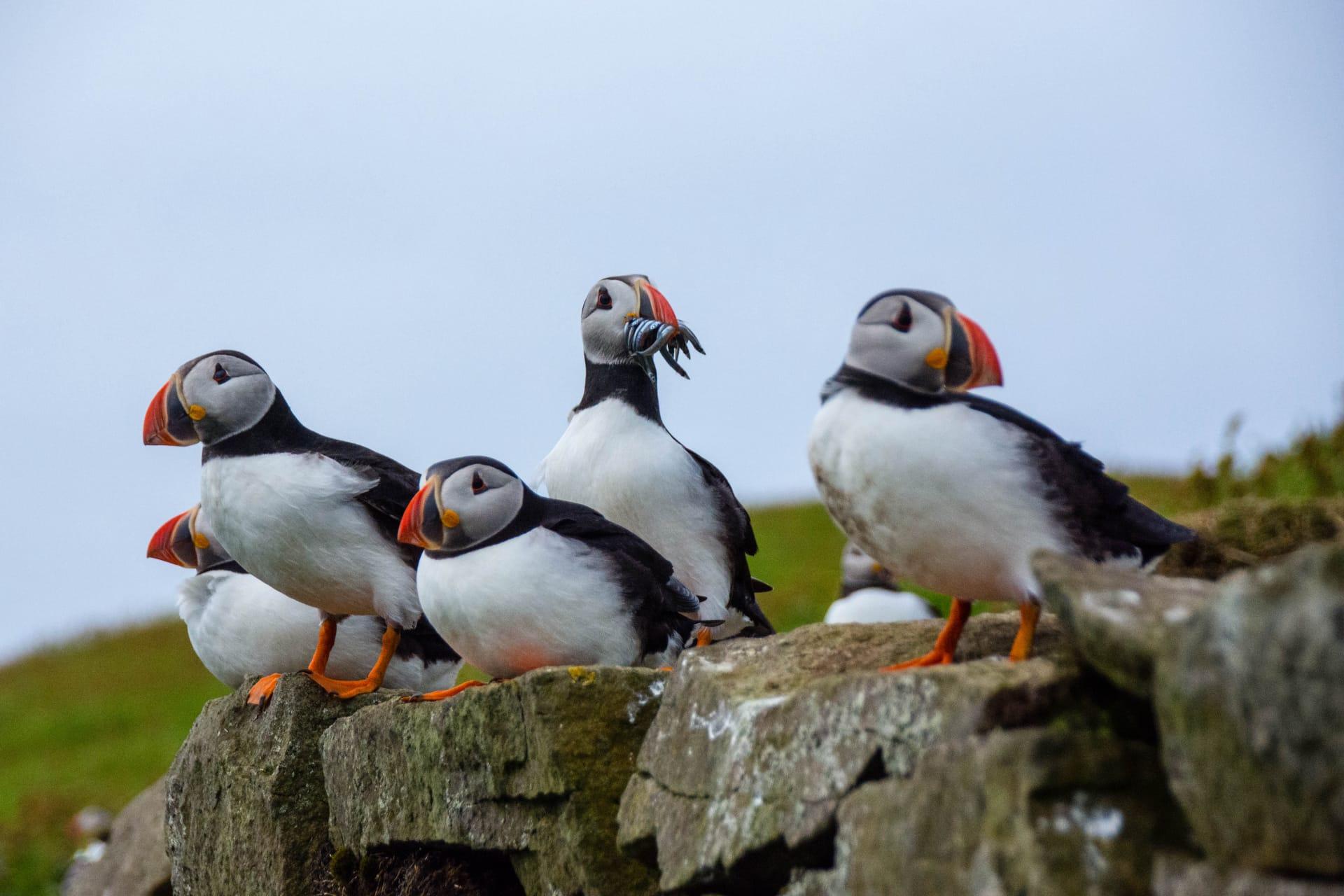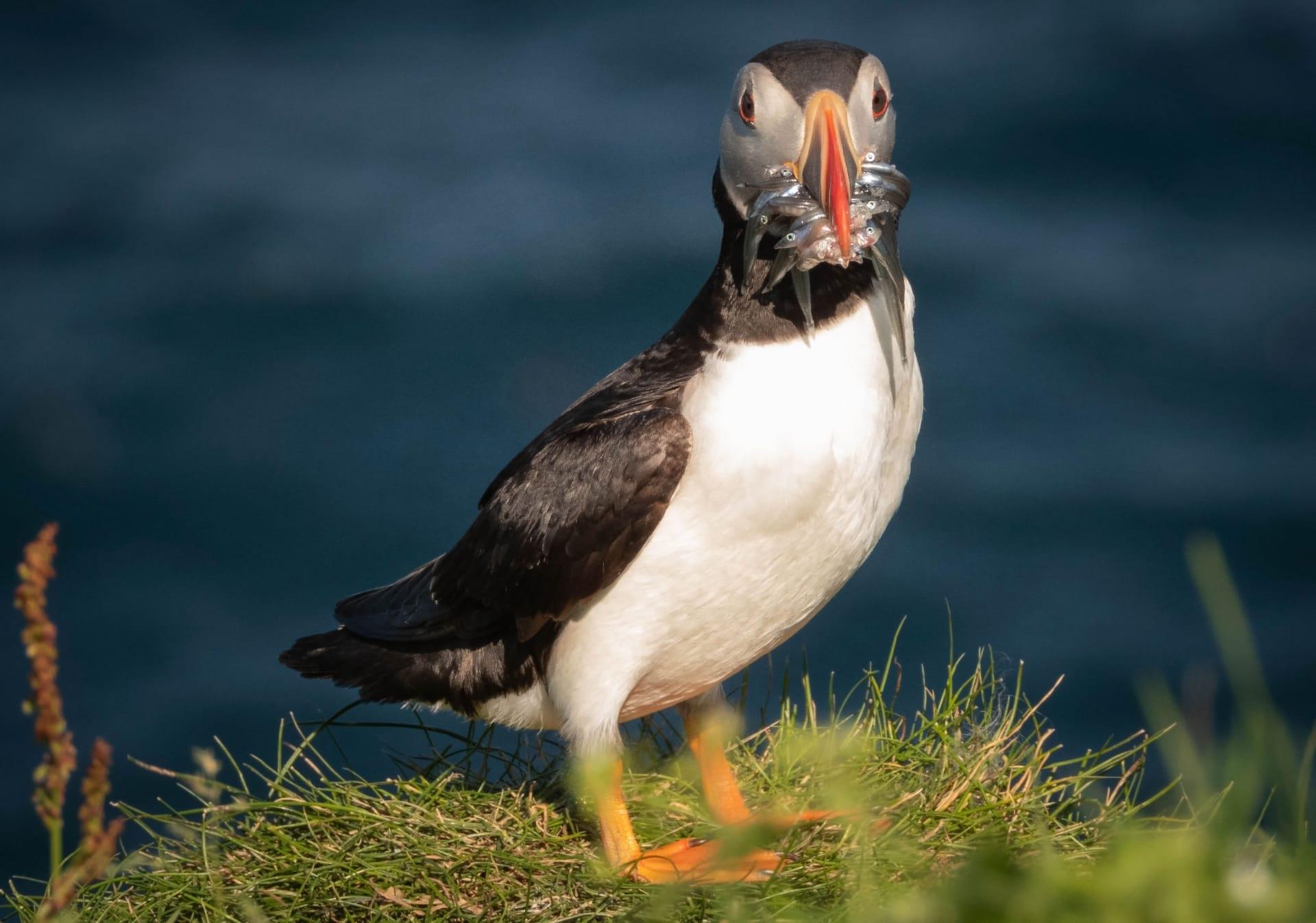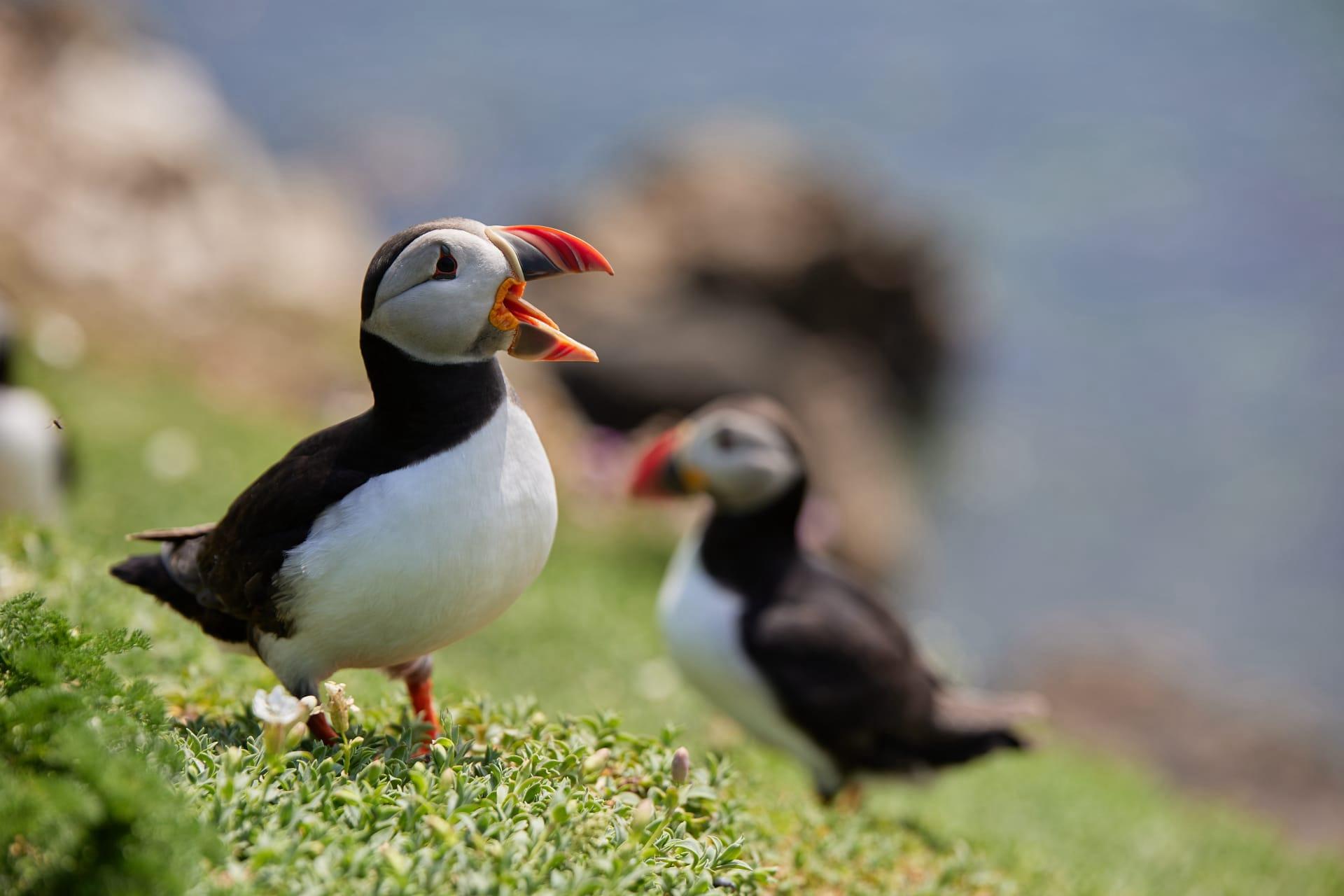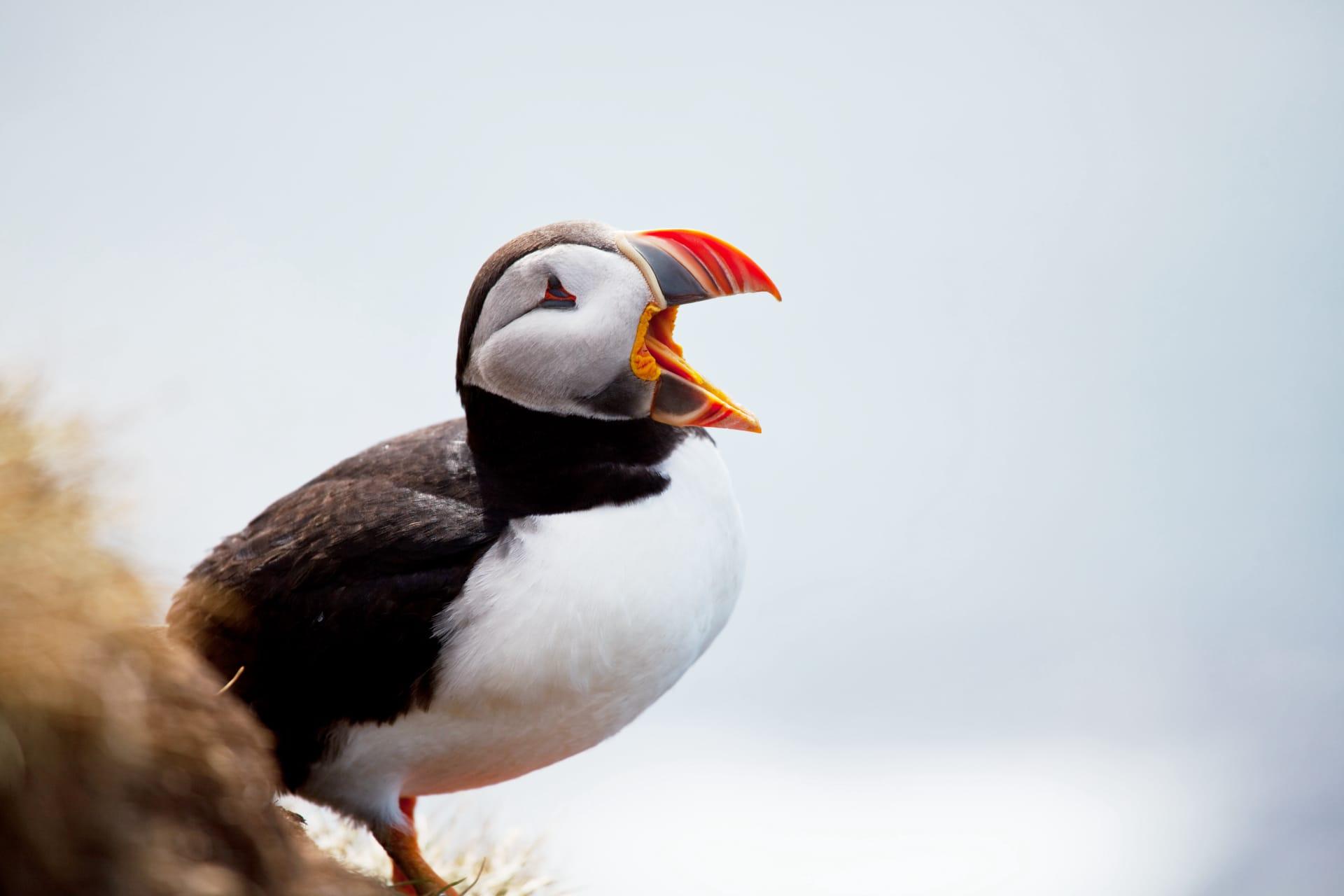Puffin Trivia
- Home /
- Trivia Question /
- Animal /
- Puffin Trivia
1
Question: What unique features make puffins easily recognizable?
Answer: Puffins are renowned for their colorful beaks and striking appearance. Their beaks, bright in hues of orange, blue, and yellow, become even more vivid during the breeding season. These birds are about 10 inches tall, with a wingspan of around 20-24 inches. Their black and white plumage adds to their distinctive look, resembling a tuxedo, which has earned them the nickname "clowns of the sea."
Question: How effective are puffins at swimming and diving?
Answer: Puffins are exceptional swimmers, using their wings to 'fly' underwater with a grace that contrasts their somewhat clumsy flight in the air. They can dive up to 200 feet deep, propelled by their strong wing strokes and steered by their webbed feet. Their average dive lasts around 20-30 seconds, but they can stay underwater for up to a minute, hunting for small fish like herring and sand eels.

2
Question: Do puffins spend their entire life at sea?
Answer: While it's a common misconception that puffins spend their entire lives at sea, they actually come ashore annually for breeding. Puffins are pelagic outside the breeding season, meaning they live on the open sea, often floating on the water's surface. However, during breeding season, they return to coastal cliffs and islands to form breeding colonies, where they lay a single egg each year.
Question: Are puffins social birds?
Answer: Contrary to the belief that puffins are solitary, they are quite social during the breeding season. They nest in large colonies, sometimes numbering in the thousands. These gatherings are not only for mating but also provide safety in numbers from predators. Puffins are known for their elaborate courtship rituals, which include bill tapping and mutual preening, strengthening the pair's bond.

3
Question: How do puffins navigate the vast ocean?
Answer: Puffins have an impressive ability to navigate the vast ocean, using the sun, stars, and Earth's magnetic field as guides. They also have a strong homing instinct, which helps them return to their birth colony to breed. Puffins are known for their remarkable memory, recalling specific feeding grounds and migration routes year after year.
Question: What is the lifespan of a puffin?
Answer: Puffins can live surprisingly long lives for birds their size. On average, a puffin lives for about 20 years. However, some individuals have been known to live well into their 30s. Their longevity is partly due to their isolated breeding grounds, which offer protection from land-based predators.

4
Question: How do puffins feed their young?
Answer: Puffin parents are dedicated to feeding their chick, known as a puffling. They catch small fish and carry them crosswise in their beaks, often transporting 10 or more fish at a time. This impressive feat is thanks to their unique beak structure, which allows them to hold several fish at once while keeping their mouth open to catch more.
Question: What challenges do puffins face in the wild?
Answer: Puffins face several challenges, including habitat loss, overfishing, and climate change. Habitat loss due to human activities affects their breeding grounds. Overfishing reduces their food supply, impacting chick survival. Climate change also shifts fish populations, forcing puffins to travel farther for food, which can affect their breeding success.

5
Question: Can puffins use tools?
Answer: In a surprising discovery, puffins have been observed using sticks as tools to scratch their bodies. This behavior, rare among birds, suggests a higher level of problem-solving and adaptability. It's a recent finding that challenges our understanding of avian intelligence.
Question: How do puffins sleep at sea?
Answer: Puffins have the remarkable ability to sleep on the ocean's surface. They tuck their beak under a wing and float, often forming groups for safety. While sleeping, puffins remain alert to potential threats, such as predators, and can quickly take flight if necessary. Their waterproof feathers and buoyant bodies make them well-adapted to this unique sleeping arrangement.